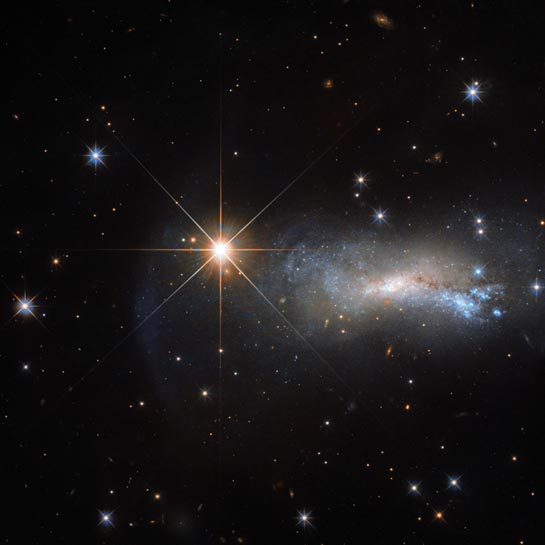
Star, Galaxy
RA 22h 18m 18.99s Dec 40° 33' 9.73"
Lacerta
50 million light-years
12.6
1.7 by 0.8 arcmin
2.71 x 2.71 arcminutes
North is 75.0° right of vertical
ESA/Hubble & NASA
April 24, 2017
ABOUT THIS IMAGE:
In space, being outshone is an occupational hazard. This NASA/ESA Hubble Space Telescope image captures a galaxy named NGC 7250. It was discovered on Nov 8, 1790 by William Herschel. Despite being remarkable in its own right - it has bright bursts of star formation and recorded supernova explosions - it blends into the background somewhat thanks to the gloriously bright star hogging the limelight next to it.
This
bright object is a single and little-studied star named TYC 3203-450-1,
located in the constellation of Lacerta (The Lizard), much closer than
the much more distant galaxy. Only this way a normal star can outshine
an entire galaxy, consisting of billions of stars. Astronomers studying
distant objects call these stars "foreground stars" and they
are often not very happy about them, as their bright light is contaminating
the faint light from the more distant and interesting objects they actually
want to study.
In this case TYC 3203-450-1 is a million times closer than NGC 7250 which
lies over 45 million light-years away from us. Would the star be the same
distance as NGC 7250, it would hardly be visible in this image.